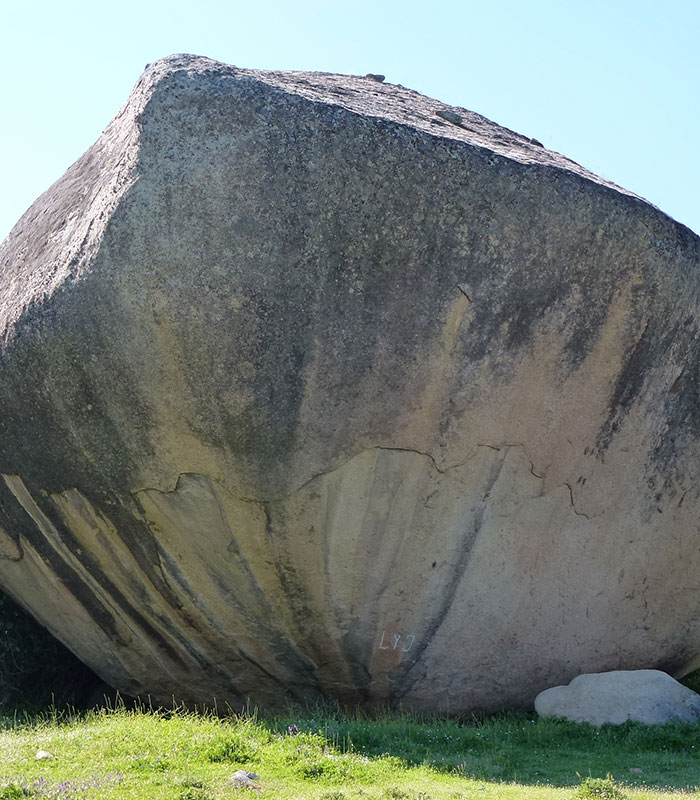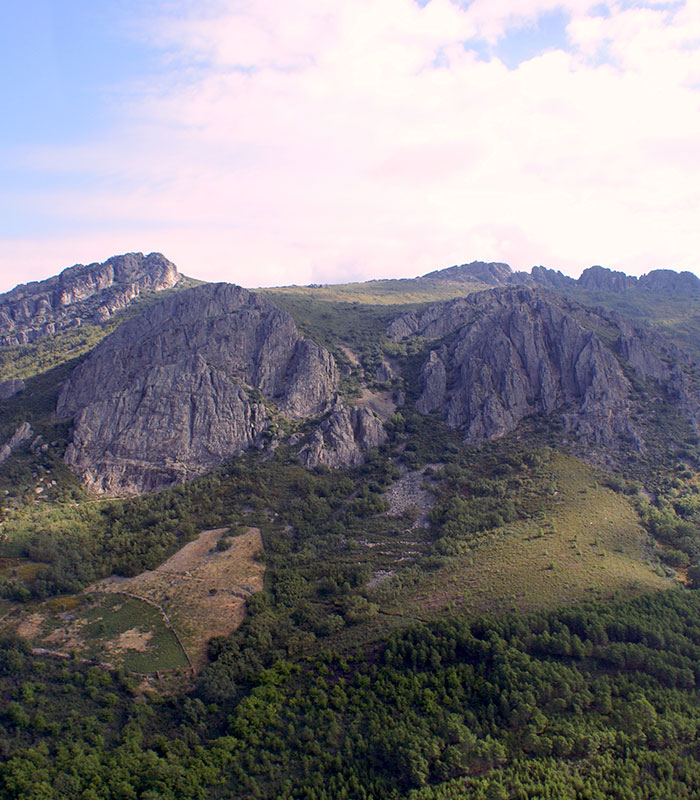The area included in the Villuercas-Ibores-Jara Global Geopark of the UNESCO holds an important example of so-called Iberian schematic art, the age of which goes back four thousand years. To date forty-one rock art stations have been described. Some of the most noteworthy are the Cueva de la Chiquita or Cueva de Álvarez in Cañamero; the Risquillo de Paulino in Berzocana, and the Cancho del Reloj in Solana de Cabañas.
Over a large part of the territory which we know today as Extremadura can be found the marks which our ancestors from six millennia ago left engraved on rock walls. In ochre and black they reflected a symbolic world in which were mixed schematic figures of animals, people, idols… and about which we know practically nothing.
This type of manifestation developed from the end of the Neolithic (4th millennium B.C.) to the Bronze Age and in some cases to the beginning of the Iron Age (1st millennium B.C.). During this time a series of transformations occurred in the life of human communities and importance began to be attached to property, the control and defence of territory, and routes. This is clear from the proliferation of fortified settlements. Also in this period aspects which had already arisen, such as sedentarisation or agriculture, became consolidated and metallurgy played an important part.

